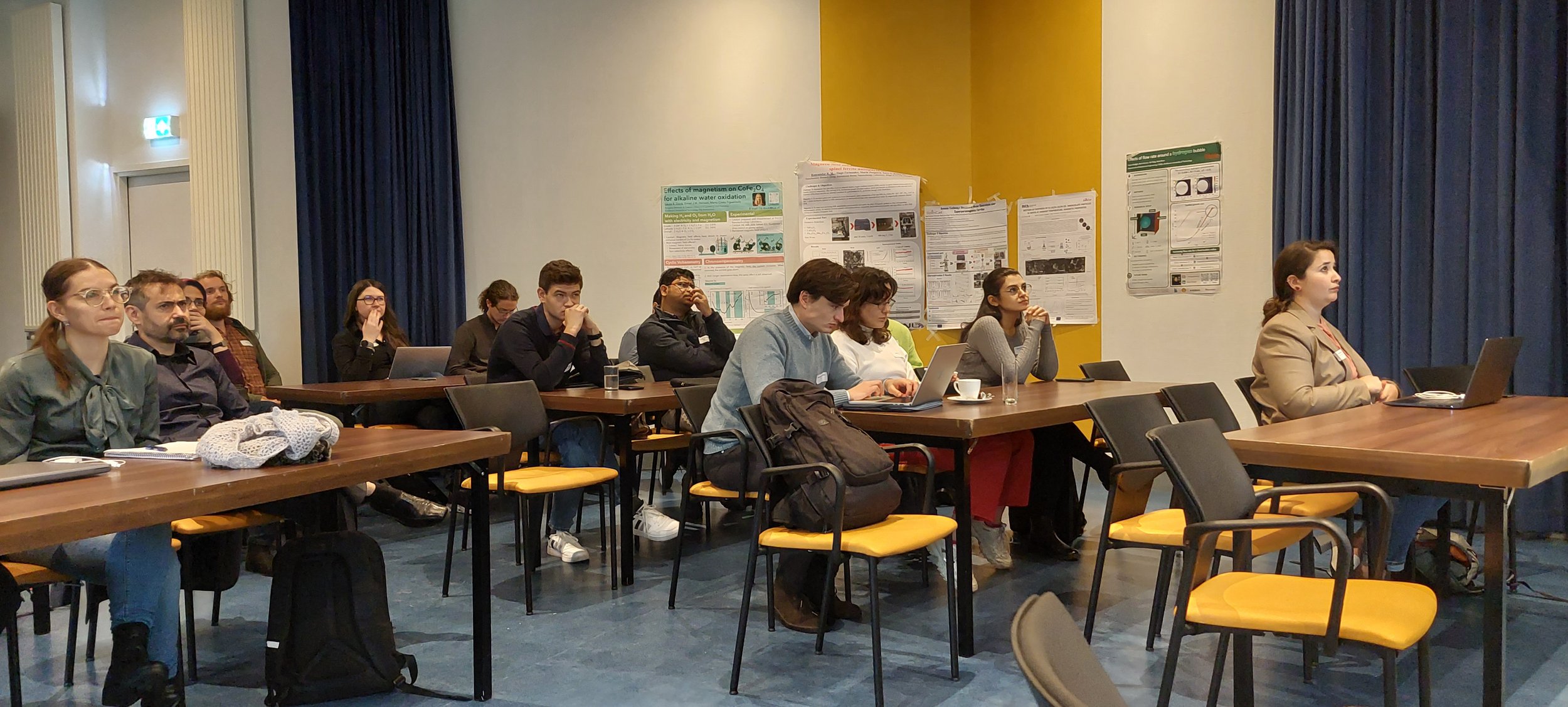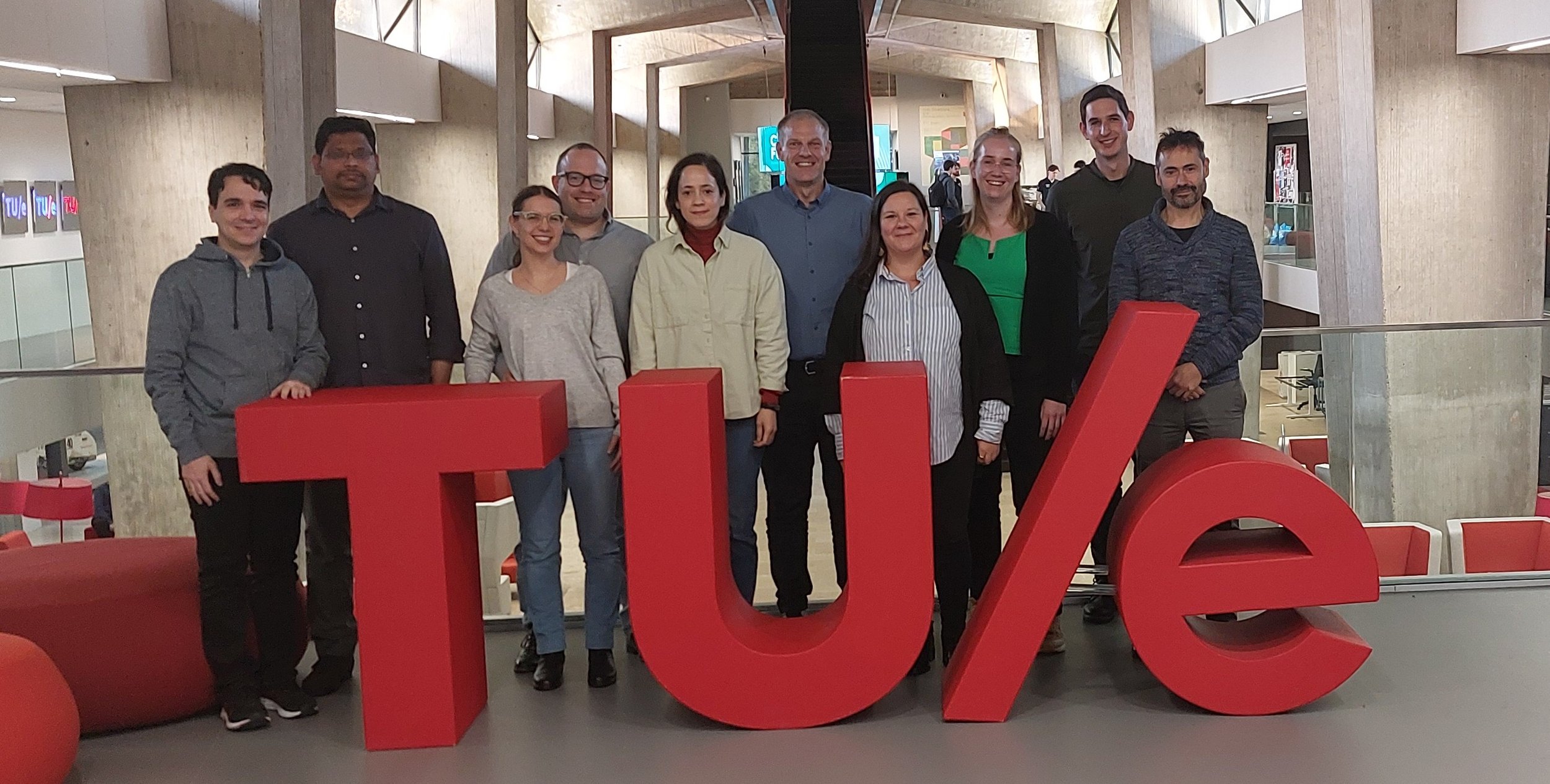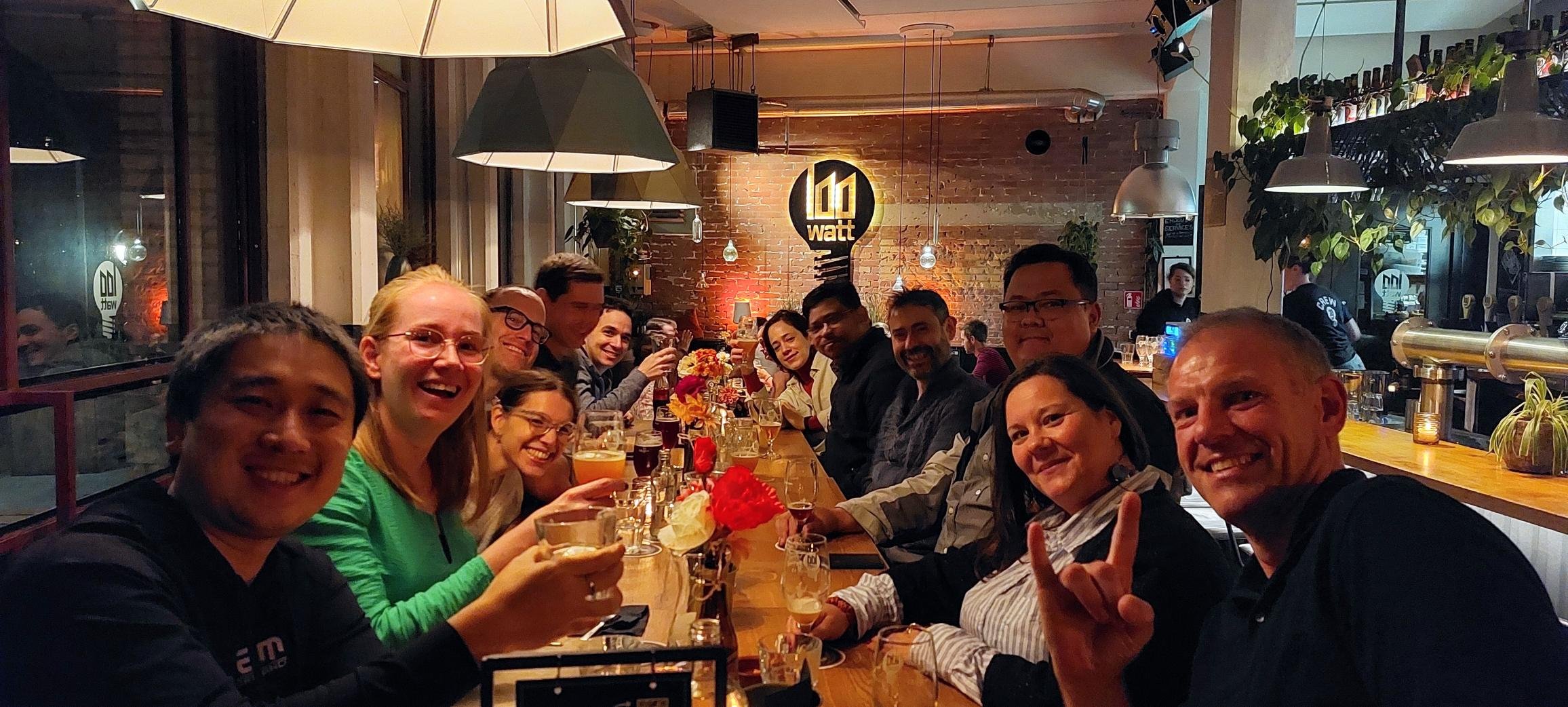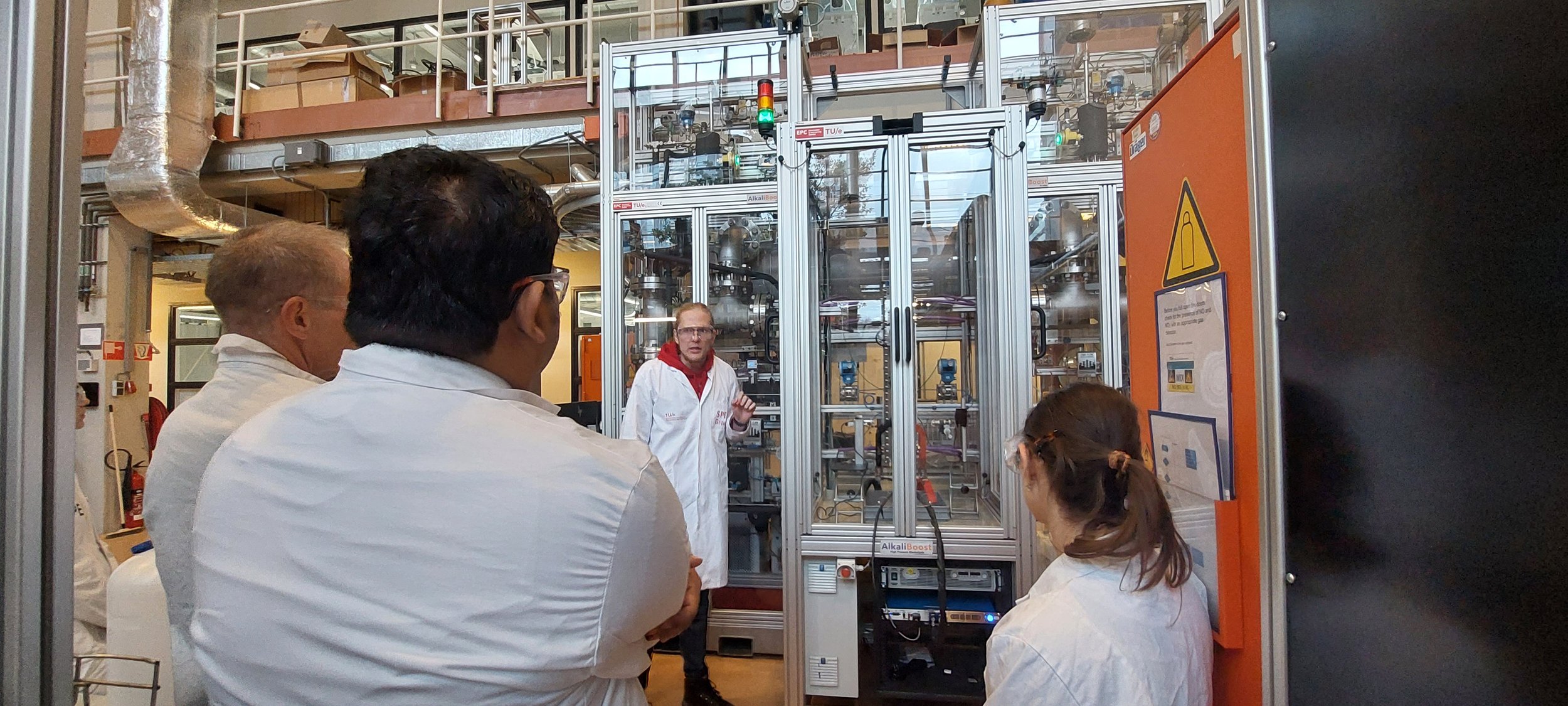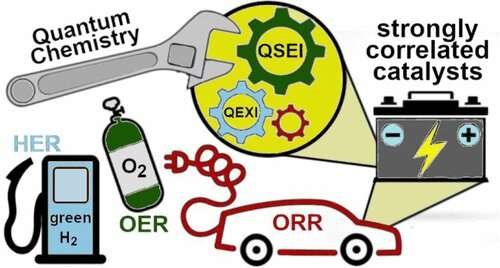On December 7th, 2023, the INL Nanochemistry Group celebrated the Annual Nanochemistry Day, where researchers presented their latest findings to the jury members: Laura Salonen, from the University of Vigo (Spain), and Begoña Espiña, the Group Leader of Water Quality at INL.
Tiago Fernandes won the best presentation award by the jury vote. His presentation was titled "Anionic Exchange Membrane Water Electrolysis over Superparamagnetic Ferrites."
Another participant, Sandra Amaral, won the audience's choice award for her presentation.
The researchers also discussed their work in the SpinCat project, which aimed to explore various aspects of nanochemistry. Ramsundar Mohan presented"Magnetic field mediated spin-polarized water splitting," and Maria Poupard presented "Bottom-up synthesis of zeolitic imidazolate frameworks: magnetic properties."






